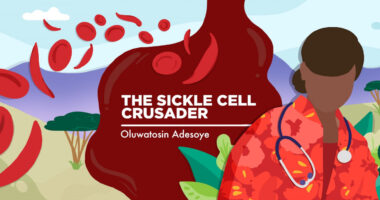Gates Foundation, Novartis Working on Affordable Gene Therapy for Sickle Cell

Novartis and the Bill and Melinda Gates Foundation are collaborating to develop a single-shot gene therapy that would cure sickle cell disease (SCD) without the need to engineer cells outside the body.
The partnership aligns with Novartis’ efforts to better treat SCD, and the Gates Foundation‘s goal of expanding access to quality healthcare in resource-poor areas.
“Existing gene therapy approaches to sickle cell disease are difficult to deliver at scale and there are obstacles to reaching the vast majority of those affected by this debilitating disease,” Jay Bradner, MD, president of the Novartis Institutes for BioMedical Research (NIBR), said in a press release.
“This is a challenge that calls for collective action,” Bradner continued, “and we are thrilled to have the support of the Bill & Melinda Gates Foundation in addressing this global unmet medical need.” Novartis describes the NIBR as its “innovative research” engine.
While the release did not specify the amount of support given, the NIBR was awarded a $7.28 million grant by the foundation in November “to explore” a cure for sickle cell and/or “durable suppression of HIV” that could be done using “low cost capabilities … in developing countries.”
SCD affects millions of people worldwide, but people of African descent bear the greatest burden. An estimated 80% of all cases occur in sub-Saharan Africa.
A significant portion of this region’s population, however, lacks access to screening, quality care, and affordable medicines.
“Gene therapies might help end the threat of diseases like sickle cell, but only if we can make them far more affordable and practical for low-resource settings,” said Trevor Mundel, president of Global Health at the Gates Foundation.
Gene therapy consists of replacing a defective gene with a healthy, or fully functional, one.
Investigative gene therapies being tested in sickle cell patients currently involve extracting stem cells from a patient’s bone marrow and modifying them, before infusing them back to the patient. The lab and manufacturing facilities, and the hospital infrastructure needed to accomplish this, however, rarely exist in the areas with the highest SCD rates.
“What’s exciting about this project is that it brings ambitious science to bear on that challenge. It’s about treating the needs of people in lower-income countries as a driver of scientific and medical progress, not an afterthought,” Mundel said.
Novartis intends to develop an in vivo gene therapy, meaning one that is delivered directly to a patient, bypassing the steps of stem cell extraction and transplantation of treated cell.
The Gates Foundation is funding a research team within NIBR that will be dedicated to developing such a therapy. In addition to addressing the scientific aspects of the treatment, the team will work with the Gates Foundation to find ways to overcome some of the access and distribution challenges common to low- and middle-income countries.
To that end, the funding agreement includes specific provisions to support global access to any innovations that come from this partnership.
This project also “holds the promise of applying lessons learned to help develop potentially curative options for other debilitating diseases affecting low-income populations, such as HIV,” Mundel said.






